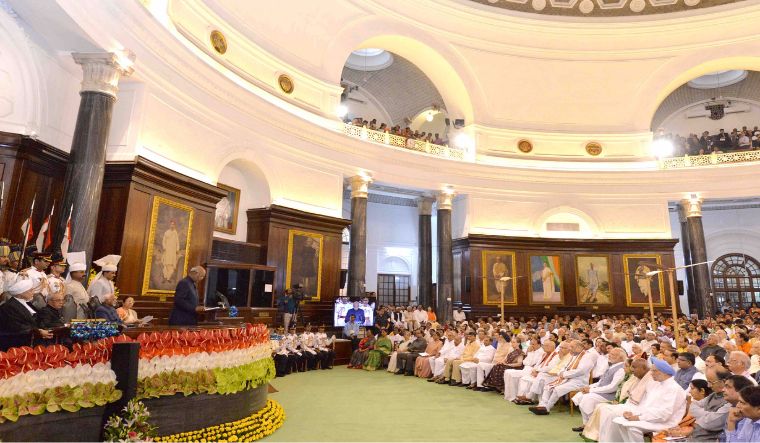As per Article 54 of the Constitution of India, the President is elected by the members of the electoral college consisting of:
(I) Elected members of both Houses of Parliament, and
(II) Elected members of the legislative assemblies of all states including NCT of Delhi and the Union territory of Puducherry.
The nominated members of either Rajya Sabha and Lok Sabha or legislative assemblies, and members of the legislative councils are not eligible to be included in the electoral college.
The value of votes of MLAs and MPs is governed by Article 55(2) of the Constitution.
The total value of votes of MLAs is 5,43,231 in 16th presidential election which is scheduled to be held on July 18. The total value of votes of MPs is 5,43,200. Cumulatively, the total value of votes of the electoral college is 10,86,431.
The electoral college will be updated to take into account results of Rajya Sabha elections and also the bye-elections to Lok Sabha and state assemblies.
How is the value of votes of MLAs and MPs calculated?
A formula based on the population of each state is given in the Constitution for determination of the value of vote of an MLA or an MP.
The population is as ascertained in the 1971 census.
An example –
Value of the vote of an MLA --
Total population of Andhra Pradesh (1971 census): 2,78,00,586
Total no of seats in the state Assembly: 175
Value of vote of each MLA: 2,78,00,586
---------------
1000 x 175
= 158.8605
= 159
The total value of all members of each state assembly is calculated by multiplying the number of elective seats in the assembly by the number of votes for each member – example - Andhra Pradesh – 175x159=27,825.
Value of vote of each MP:
The total value of votes of all the states added together is divided by the total number of elected MPs of Parliament (Lok Sabha 543 + Rajya Sabha 233) to get the value of votes of each MP.
The value of votes of each MP is 700.
Calculation of votes polled to decide the winner:
The ballot paper contains two columns – 'Name of Candidate' and 'Order of preference'.
Each elector is entitled to as many preferences as the number of contesting candidates.
After calculating the total value of votes polled by each candidate, the Returning Officer totals up the value of all valid votes polled. The quota for declaring a candidate as elected is determined by division of the valid votes by 2 and adding one to the quotient, ignoring the remainder, if any.
For example – If the total value of valid votes polled by candidates is 1,00,001, the quota required for getting elected is:
1,00,001
----------- + 1 = 50,000.50 + 1 (Ignore .50)
2
Quota = 50,000+1 = 50,001.
If no candidate gets the quota on the basis of first preference votes, a second round of counting is held where the candidate having the lowest value of votes of first preference is excluded and his or her votes are distributed amongst the remaining candidates according to the second preference marked on these ballot papers.
Total electors in Presidential elections 2022:
The total number of members in the electoral college is 4,809. Of these, 233 are Rajya Sabha members, 543 are Lok Sabha MPs, and 4,033 are members of state assemblies.
Value of each vote of MPs is 700.
Total value of votes of 776 MPs is 5,43,200.
Total value of votes of MLAs is 5,43,231.
Total value of votes of the electoral college is 10,86,431.





